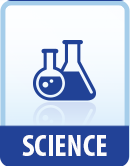|
This section contains 150 words (approx. 1 page at 300 words per page) |
World of Invention on Edward John Bevan
Bevan studied chemistry at Owens College, Manchester, England, where he met his future collaborator Charles F. Cross. After completing his studies, Bevan worked for a paper mill in Scotland. The main ingredient in paper is cellulose, primarily from trees. Cellulose does not dissolve in water, although it will swell when wet, and will react to a few chemicals, namely strong acids and bases.
In 1885 Bevan and Cross began a consulting firm in London, concentrating on the investigation of industrial applications of cellulose. Together with Beadle they patented a process that resulted in viscose rayon, dissolving cellulose in carbon disulfide and sodium xanthate and then passing it through fine holes in a metal plate into a dilute acid. The acid regenerated the cellulose into fibers that can be spun and dried.
In 1892 Bevan became the public analyst to the Middlesex County Council. He died in October of 1921, near London.
|
This section contains 150 words (approx. 1 page at 300 words per page) |


